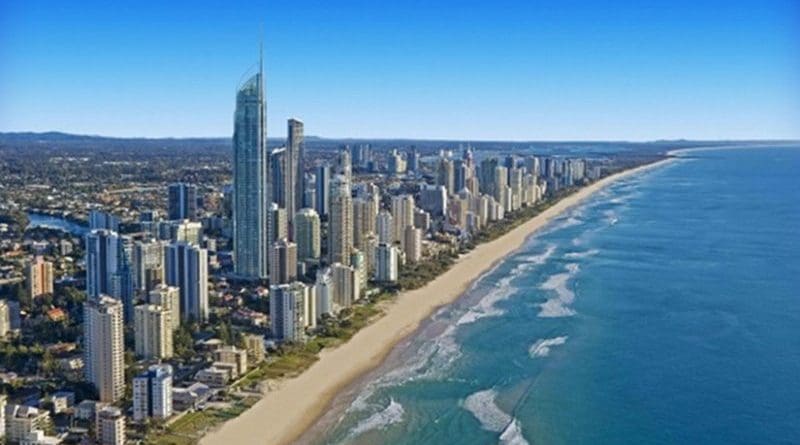UAE Central Bank Bites Bullet On Growth, But Better News Is To Come – Analysis
By Arab News
By Frank Kane
Last week the Central Bank of the UAE surprised economics analysts with a big downgrade of its forecasts for growth in gross domestic product (GDP) for the current year.
Just three months ago, the bank — the main instrument of monetary and fiscal policy in the Emirates as well as its most authoritative economic statistician — laid out a bullish projection for the national economy in 2019.
In its March report, the Central Bank said that growth in the non-oil sector was expected to reach 3.4 percent this year. Add this to projected growth of 3.7 percent in the oil economy — still the most important motor of the economy despite steady progress toward diversification — and the UAE was looking at a healthy 3.5 percent increase in GDP in 2019.
Doubts about the reliability of that forecast began to surface almost immediately, and were not confined to just the private opinions of several of the region’s leading economists.
In April, the International Monetary Fund said in its regional economic outlook that overall growth would be 2.8 percent — though still within touching distance of the bank’s forecast and well up on the 1.7 percent the IMF calculated for 2018.
The following month, after one of its regular staff visits to the UAE where it holds discussions with senior policymakers, it took a more cautious view, with a statement that UAE GDP growth “could exceed” 2 percent this year and approach 3 percent in 2020-21.
There was a clear gap between the IMF and the UAE Central Bank. Last week, that gap was bridged, when the bank’s annual report cuts its projection for economic growth by 1.5 percentage points, to 2 percent.
The detailed explanation contained in the bank’s annual report identifies the oil economy as one factor in the downgrade. Because of the cuts to oil production agreed with OPEC and some non-OPEC countries led by Russia, crude production from the UAE was projected to average 3.1 million barrels per day this year, down from nearly 3.3 million in the last quarter of 2018.
But the big difference lay in the non-oil sector. The bank’s report projected that this segment of the economy would expand by just 1.8 percent this year, versus its earlier forecast of 3.4 percent. It was still an increase on the 1.3 percent growth in non-oil in 2018, though down on the 1.9 percent of the previous year.
The global dynamic of the oil market is a factor all regional economies have to live with, and are largely outside the control of any one single player. But for the non-oil sector in the UAE, it was clear that the three years from 2017 have been relatively flat. For a country in the middle of a strategy to develop away from oil dependency, that is a challenge.
The bank’s annual report added some flesh to the non-oil weakness. There was some good news. The important wholesale and retail sector grew, as did construction. The small agricultural sector nearly doubled its growth in 2018, and “administrative and support service activities” returned to positive growth, as did “professional, scientific and technical activities.”
But the rest of the non-oil sectors, including big economic generators like utilities, transportation, finance and insurance, and real estate — either fell significantly or were flat. Manufacturing and “accommodation and food services activities” — high-profile parts of the diversification plan — more than halved last year.
The government of the UAE is well aware of the challenges and has already taken action. There is a 50 billion dirham ($13.6 billion) economic stimulus package in place in the capital, Abu Dhabi; in Dubai, policymakers have announced a raft of measures to reduce the cost of doing business and encourage long-term investment. A new law designed to attract foreign direct investment has been in place since the beginning of 2019.
The impact from these initiatives could come through as early as next month, the IMF told Arab News. “As suggested in our May press release, our growth forecast for 2019 is broadly in line with the Central Bank’s. Growth is indeed likely to be lower than we forecast in the April world economic outlook, but we’re now seeing something of a turnaround and expect a pickup in growth in 2020-21. These updates will be reflected in our July update,” the fund said in a statement.
- Frank Kane is an award-winning business journalist based in Dubai. Twitter: @frankkanedubai

